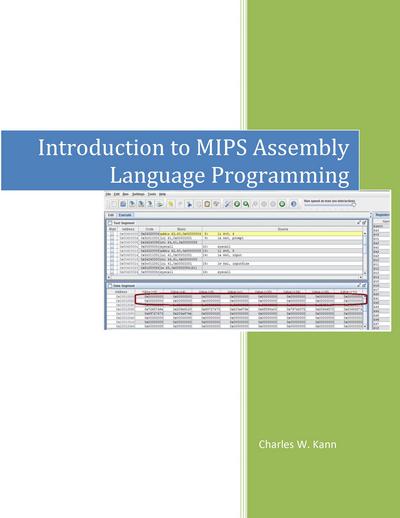
Introduction To MIPS Assembly Language Programming
This book introduces students to assembly language programming in MIPS. It covers basic operators and instructions, subprogram calling, loading and storing memory, program control, and the conversion of the assembly language program into machine code.
Publication date: 31 Dec 2015
ISBN-10: n/a
ISBN-13: n/a
Paperback: 177 pages
Views: 8,991
Type: Book
Publisher: The Cupola Scholarship
License: Creative Commons Attribution 4.0 International
Post time: 24 Nov 2016 03:30:00
Introduction To MIPS Assembly Language Programming
 This book introduces students to assembly language programming in MIPS. It covers basic operators and instructions, subprogram calling, loading and storing memory, program control, and the conversion of the assembly language program into machine code.
This book introduces students to assembly language programming in MIPS. It covers basic operators and instructions, subprogram calling, loading and storing memory, program control, and the conversion of the assembly language program into machine code.
Publication date: 31 Dec 2015
ISBN-10: n/a
ISBN-13: n/a
Paperback: 177 pages
Views: 8,991
Document Type: Book
Publisher: The Cupola Scholarship
License: Creative Commons Attribution 4.0 International
Post time: 24 Nov 2016 03:30:00
Share — copy and redistribute the material in any medium or format
Adapt — remix, transform, and build upon the material for any purpose, even commercially.
The licensor cannot revoke these freedoms as long as you follow the license terms.
Click here to read the full license.
Charles Kann wrote:This book was written to introduce students to assembly language programming in MIPS. As with all assembly language programming texts, it covers basic operators and instructions, subprogram calling, loading and storing memory, program control, and the conversion of the assembly language program into machine code.
However this book was not written simply as a book on assembly language programming. The larger purpose of this text is to show how concepts in Higher Level Languages (HLL), such as Java or C/C++, are represented in assembly. By showing how program constructs from these HLL map into assembly, the concepts will be easier to understand and use when the programmer implements programs in languages like Java or C/C++. Concepts such as references and variables, registers, binary and Boolean operations, subprogram execution, memory types (heap, stack, and static), and array processing are covered to clarify the decisions made when implementing HLL. Program control is presented using a mapping from structured programs in pseudo code to help students understand structured programming, and why it exists. Memory access in assembly is presented to high light the difference between references (pointers) and values, and how these impact HLL.
This book has numerous code examples, and many problems at the end of each chapter, and it is appropriate for a class in Assembly Language, or as a extra resource for a class in Computer Organization.
More resources:
Tweet
About The Author(s)
Charles W. Kann III is an Adjunct Professor of Computer Science in the Department of Computer Science, Gettysburg College.

Charles W. Kann III is an Adjunct Professor of Computer Science in the Department of Computer Science, Gettysburg College.